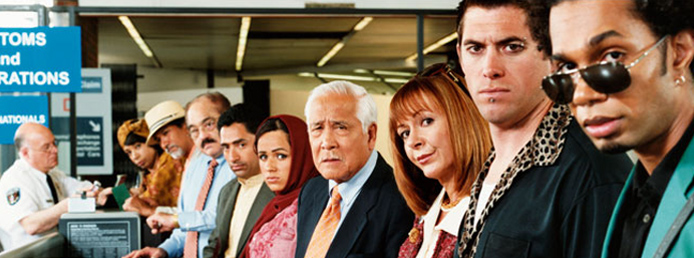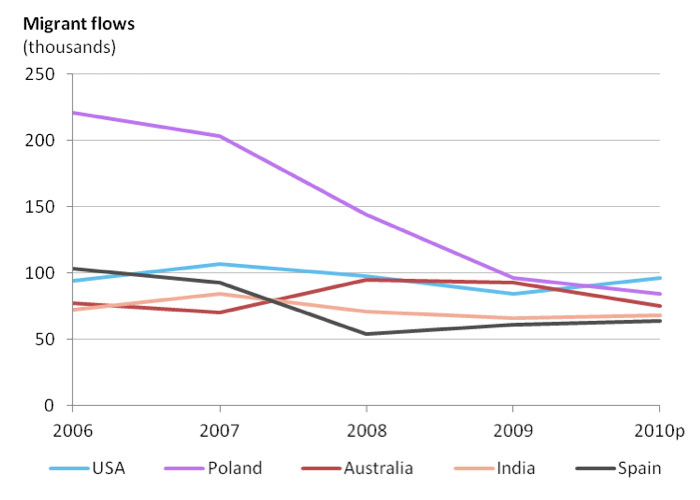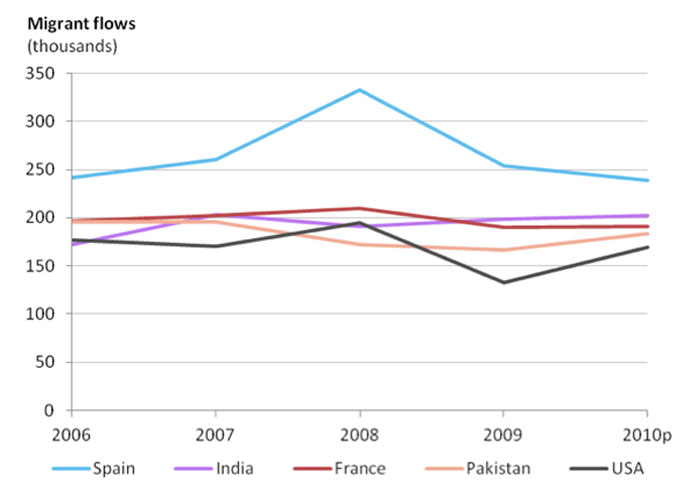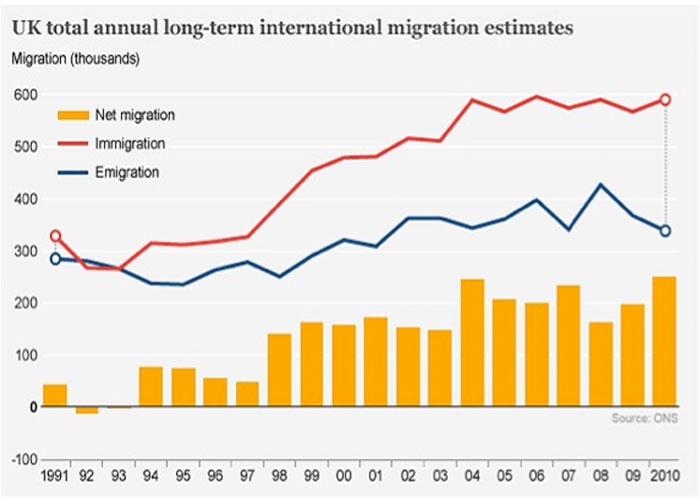Migration in the UK
The UK is one of the most multi-cultural countries in the world. Our history shows we have an ancient mix of Celtic, Scandinavian, Anglo-Saxon, Norman, Jewish and Irish ancestors. These were joined during the 20th Century by migrants from African and Asian Commonwealth countries in the Caribbean and Southern Asia and from many war-torn European countries.

Immigration
In the last 10 years, immigration has focused on the legal movements of people inside the European Union and the mixture of legal and illegal migrants mainly from Asia and Africa seeking asylum or to find work to escape extreme poverty and hardships in their homelands.
Some of these have been short term migrations (under a year in the UK) and some long term (over a year).
People in politics and on the news constantly discuss the good and bad affects of migration and what to do about it in the future.


In the U.K. national statistics say that a short-term migrant is someone who changes their country of residence for between 1 and 12 months.
The census data for 2010 states
996,000 short-term immigrants entered England and Wales 2,622,000 emigrants left for countries outside the UK.
So this means that we are losing more than we are gaining
Let's look at some short term immigration details
Short-term immigrants in the 16-24 age range make up about 1/3 of the total number of people who arrive each year and they are the most common age group.
-
Much publicity has been given to Polish workers migrating to the UK.
-
Short-term immigrants in the 16-24 year age range make up about a 1/3 of the total number that arrive each year and they are the most common age group
The statistics state that the number of short-term migrants arriving from Poland dropped by 137,000 from mid-2006 to 84,000 in mid-2010.
-
The USA is now the most common source country; 96,000 short-term migrants arrived from there between mid 2009 and mid 2010.
-
17% of short term migrants have British citizenship.
-
It is generally thought that short-term immigrants to England and Wales are men but the statistics show that they are evenly distributed between males and females.
This immigration graph shows us just how important the reduction of polish migrants is in the total number reductions since 2006. Can you suggest reasons for these patterns?
Now let's look at some short term emigration details
-
Spain was the most commonly visited country from mid 2006 to mid 2010. In mid 2010 239,000 short-term migrants visited Spain
-
The number of 1-12 month short-term migrants emigrating from England and Wales has shown an upward trend since mid-2004. It has recently increased from 2,554,000 in mid 2009 to 2,622,000 in mid 2010
-
Fewer women than men emigrated (46% compared to 54%) There were only a few children but above the age of 15 there was a relatively even spread across all age groups
-
The majority of short-term emigrants (69 %) had British citizenship

These trend lines show that Spain remains the most important destination for UK migrants, though others are not far behind. Can you suggest reasons why UK residents might migrate to each of these countries for short periods of time?
Long term migration summary
Long term migration is when people move to a new country for periods of a year or more. The government figures for this have been estimated. They are also very controversial because many people believe they are difficult to measure and inaccurate, and underestimate the true number of illegal immigrants.
Immigration to the UK in the year to September 2011 was 589,000,
Emigration from the UK in the year to September 2011 was 338,000.
This means the estimated net long-term migration to the UK in the year to September 2011 was plus 252,000
Educational study is the most common reason for migrating to the UK (250,000 for the year to September 2011).
Citizens from non-EU countries continue to be the largest group of migrants to the UK. 343,000 non-EU citizens arrived to live in the UK in the year to September 2011, which is 58 per cent of all immigrants.

So will the migration debate go away with the publication of these Census details?
This is very unlikely!
Perhaps we need to identify that the pattern of migration is constantly changing and that we cannot rely on textbooks or even last year's data to give us a clear description of what is happening to migration in the UK each year.
Did you know?
We may feel that Europe might not be a particularly attractive place to migrate to and get a job in at the moment - after all, the region is in economic crisis. There are very high levels of unemployment and some countries such as Greece, Italy and Spain need multi-billion Euro financial support.
However, this is not how it seems to the young people of the poor and conflict-infected countries of sub-Saharan Africa like Somalia and nations like Afghanistan in south Asia. They sometimes risk all they have, including their lives, to attempt the illegal migration into the EU, either northwards across the Mediterranean or into the European Union across the land border from Turkey (not yet in the EU) into Greece. Once inside Greece they hope to move on more easily to the richer EU countries in the north and west like Germany or the UK.
These are the problems:
-
Turkey is not in the EU so the Greek/Turkish border is in reality the border of the EU. Once inside the EU the migrants think they can move to any EU country more easily. The border in the Evros region is the main entry point into the EU for migrants from Asia. In January 2012, the largest group of migrants who crossed into Greece came from Afghanistan, followed by the nationals of Pakistan and Bangladesh. Migrants from North Africa are the second largest group, Algerians and Moroccans being the most numerous. Most are men but women and families with children are also involved.
-
There are many gangs and some of the unemployed communities either side of the border are willing to help illegal migrants across for money.
-
The border has natural hazards such as the sea and the Evros river that claim many lives. Some graveyards in both countries are filling up with migrant fatalities.
-
A team of hundreds of border guards made up of men from other EU countries, are part of an EU organization called FRONTEX. They have reinforced Greek police forces at an open section of the country's border with Turkey. Illegal immigrants are arrested in their thousands each month by this operation but many get through undetected too. More try to get through in summer than in winter but those who have tried during the winter months have sometimes lost fingers, toes or their lives to frostbite.
-
Migrants who are caught in Greece are sent to the Greek capital of Athens. There, the illegal immigrants are kept in detention centres until a decision is made on how to deport them back to their own country. There are so many immigrants (55,000 in 2011) that Greece can only provide very basic centres. So life is harsh for the migrants and not the new life they’d hoped for. Greece is having great difficulty in managing and paying for this huge and apparently never-ending flow of illegal arrivals. Greece complains that they are not helped enough by the rest of the EU who will not allow the migrants to be passed on further into the EU.

